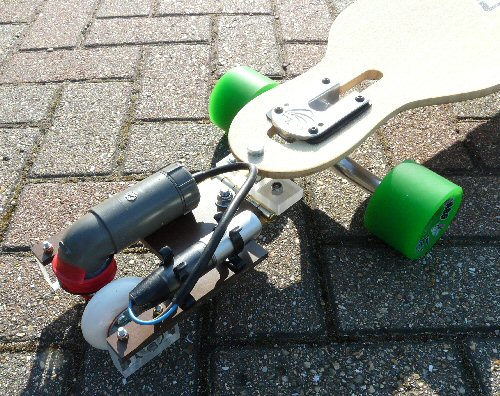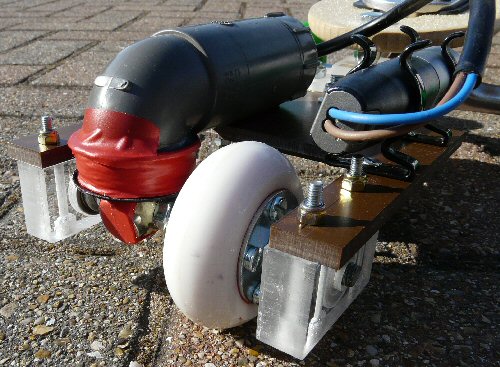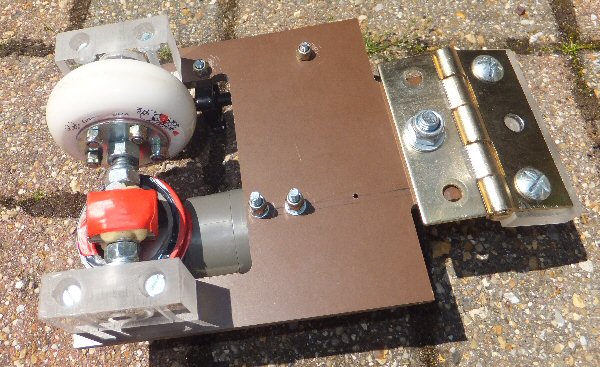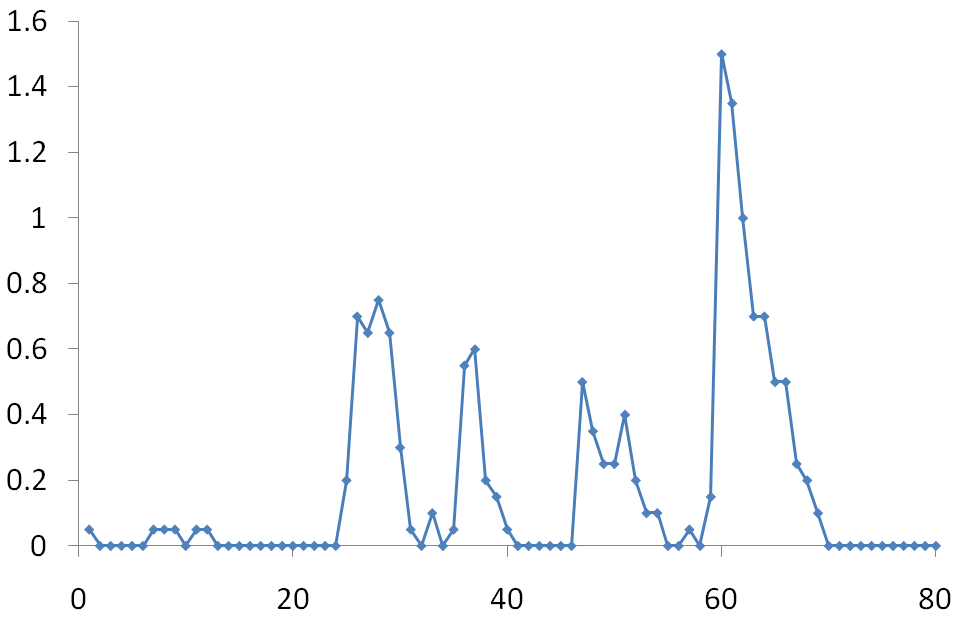Skateboard speedometer MK2
(for longboards)
Jonathan Hare, The Creative Science Centre, Sussex University
Please also see the main article for more details Longboard Speedo 
The MK2 velocity measuring device shown connected to the back of the skateboard.


